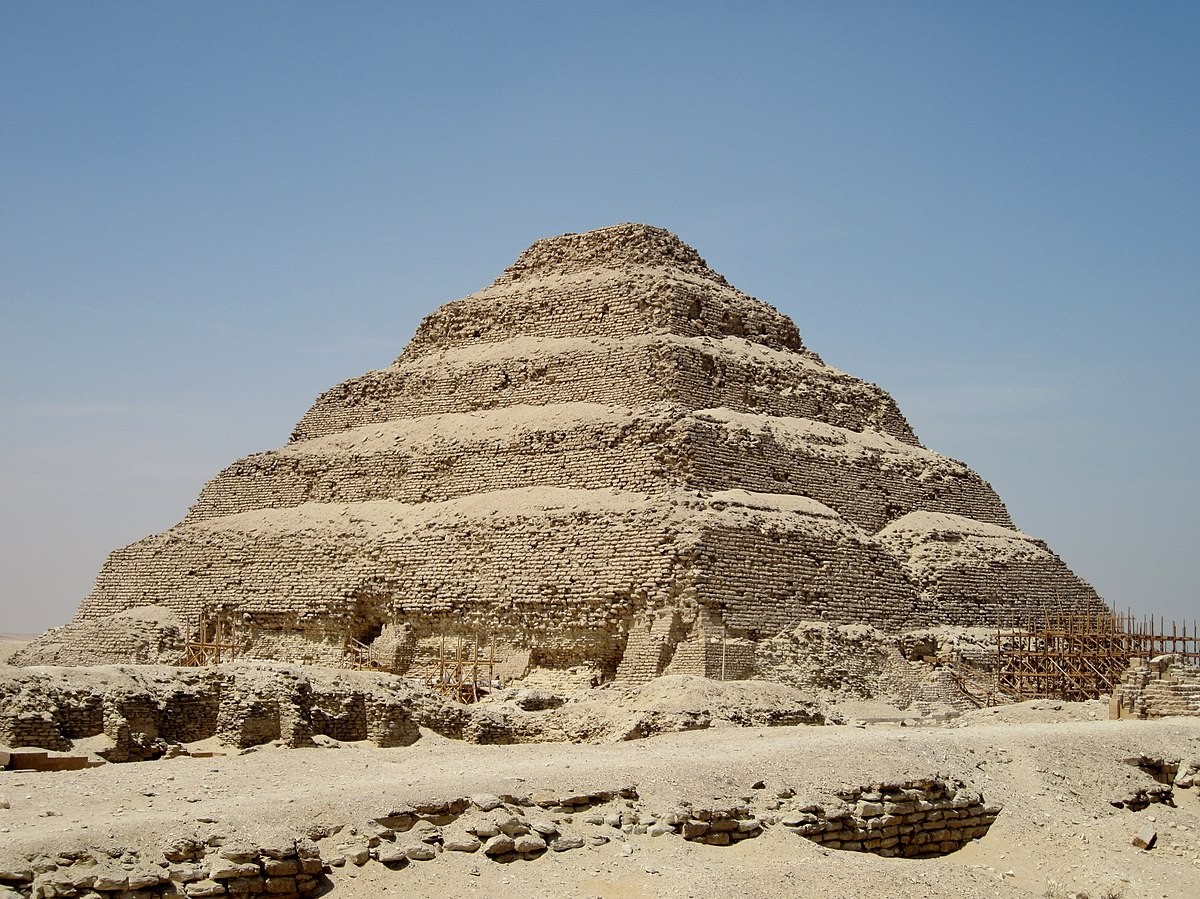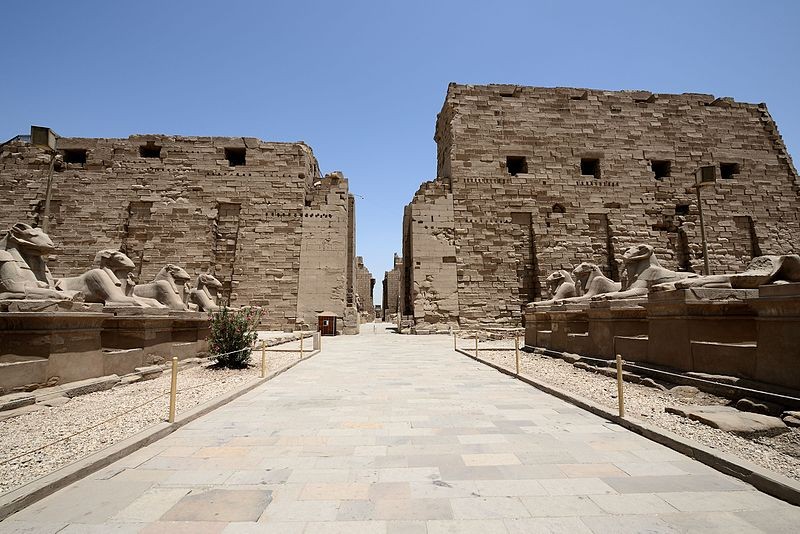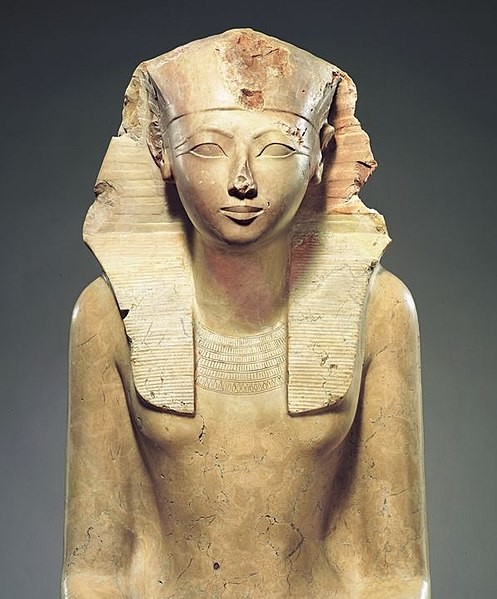History of Ancient Egypt
The history of Ancient Egypt goes back over 5000 years and is divided into three periods. At the beginning, there were two kingdoms, Lower Egypt around the Nile Delta and Upper Egypt, in the Nile Valley. They were united by Menes at about 3000 BC.
The Old Kingdom (2600 BC - 2100 BC)
During this period, Memphis, south of today's Cairo, became the capital of Egypt.
The old kingdom is also known as the Pyramid Age. The first pyramid was built by Djoser, a gigantic structure rising in six steps. The most famous pyramids were later constructed in Giza by Khufu, Khafre and Menkaure. The Great Sphinx, a statue that is half man and half lion is also situated there.
Towards the end of the era, the kingdom collapsed as pharaohs lost more and more power.

Djoser's step pyramid
Image:Olaf Tausch, CC BY 3.0,
via Wikimedia Commons
The Middle Kingdom (1950 BC - 1630 BC)
During this period, the center of power shifted from Memphis to Thebes in central Egypt .
Pharaohs began the construction of large temples. The most impressive was the Karnak Temple Complex near Luxor. Large irrigation systems were built so that Nile water could be used wisely on the fields.
Ships on the Nile River exchanged gold, ivory, food and other products with Nubia, a kingdom to the south.

Temple complex in Karnak
Image: Hamerani, CC BY-SA 4.0,
via Wikimedia Commons
The New Kingdom (1550 - 1050 BC)
At the height of Egypt's power, pharaohs conquered foreign lands, and extended its influence as far as the Euphrates River. Soldiers brought home slaves from these areas who worked for Egyptians.
Instead of being buried in pyramids, the new rulers were put to rest in The Valley of the Kings. One of the most famous kings in this era was Tutankhamen (1333 - 23 BC), the boy king whose tomb filled with rich treasures was discovered in 1922.
Ramses II , one of the most powerful leaders, built statues in all of Egypt. He also completed the Great Hall in Karnak.
Hatshepsut was the first great female leader in Ancient Egypt.

Valley of the Kings
Image: Fotograf/Photographer: Peter J. Bubenik (1995), CC BY-SA 2.0,
via Wikimedia Commons
Statue of Hatshepsut on display in the Metropolitan Museum of Art
Image:Metropolitan Museum of Art, CC0,
via Wikimedia Commons
The Decline of Ancient Egypt
At about 1000 BC, pharaohs started to lose power and their influence became weaker. Foreign armies invaded Egypt on a regular basis. In 332 BC, Alexander the Great invaded Egypt and founded Alexandria on the Mediterranean coast, which later became Egypt's capital.
After the reign of Queen Cleopatra, Egypt became a Roman province. When the Roman Empire collapsed, Byzantine emperors ruled Egypt from Constantinople and spread Christianity throughout the region. In the 7th century, Arabs conquered Egypt, and as a result many Christians converted to Islam.